
Aster is a genus of perennial flowering plants in the family Asteraceae. Its circumscription has been narrowed, and it now encompasses around 170 species, all but one of which are restricted to Eurasia; many species formerly in Aster are now in other genera of the tribe Astereae. Aster amellus is the type species of the genus and the family Asteraceae.
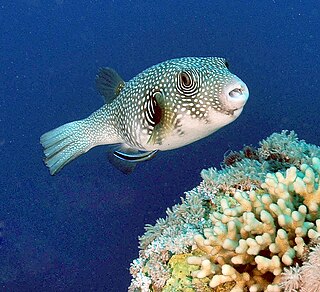
The white-spotted puffer fish is a medium to large-sized puffer fish, it can reach 50 cm length. It is light grey in color, or greyish or yellowish, and clearly covered with more or less regular white points, that become concentric contrasting white and dark grey lines that radiate around the eyes and pectoral fins. The ventral part is white. The "shoulder" is dark. It also has concentric contrasting white and dark grey lines that radiate around the eyes and pectoral fins. The white spotted puffer fish is poisonous.

Stenopus hispidus is a shrimp-like decapod crustacean belonging to the infraorder Stenopodidea. Common names include coral banded shrimp and banded cleaner shrimp.
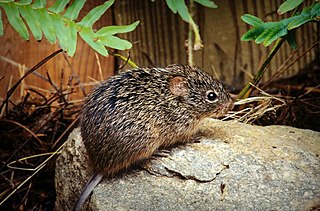
A cotton rat is any member of the rodent genus Sigmodon. Their name derives from their damaging effects on cotton as well as other plantation crops, such as sugarcane, corn, peanut and rice. Cotton rats have small ears and dark coats, and are found in North and South America. Members of this genus are distributed in the Southwestern United States, Mexico, Central America, and South American countries of: Venezuela, Ecuador, Colombia, Peru, Brazil, Guyana, and Suriname. Many of the species are found in Mexico.

Rubus hispidus, with the common names swamp dewberry, bristly dewberry, bristly groundberry, groundberry, hispid swamp blackberry or running swamp blackberry, is North American species of dewberry in the rose family.
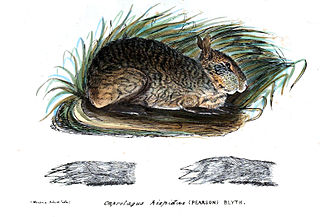
The hispid hare, also called Assam rabbit and bristly rabbit, is a leporid native to South Asia, whose historic range extended along the southern foothills of the Himalayas. Today, its habitat is highly fragmented with an area of occupancy estimated at less than 500 km2 (190 sq mi) extending over an area of 5,000 to 20,000 km2. Populations experienced a continuing decline in suitable habitat due to increasing agriculture, flood control, and human development. It is therefore listed as Endangered on the IUCN Red List since 1986. It is the only species in the genus Caprolagus.

Ferreira's spiny tree-rat is a spiny rat species found in Bolivia, Brazil, Colombia, Ecuador, French Guiana, Guyana, Peru, Suriname and Venezuela. The etymology of the species name corresponds to the Latin word hispidus meaning bristly.
The hispid hocicudo is a species of rodent native to South America. It is found in Argentina and Brazil, in the Atlantic Forest.

The bristly catshark iis a species of shark belonging to the family Pentanchidae, the deepwater catsharks. This shark is found from southeastern India and the Andaman Islands, between latitudes 15° N and 5° N, at depths between 200 and 300 m. Its length usually ranges from around 20–26 cm (7.9–10.2 in), and it is regarded as the smallest catshark of Bythaelurus.

The hispid pocket mouse is a large pocket mouse native to the Great Plains region of North America. It is a member of the genus Chaetodipus.
The hispid pocket gopher is a species of rodent in the family Geomyidae. It is found in Mexico, Belize, Guatemala, and Honduras. Some authors classify it in the genus Orthogeomys, but recent research has allowed this and its related species to be classified in the genus Heterogeomys.
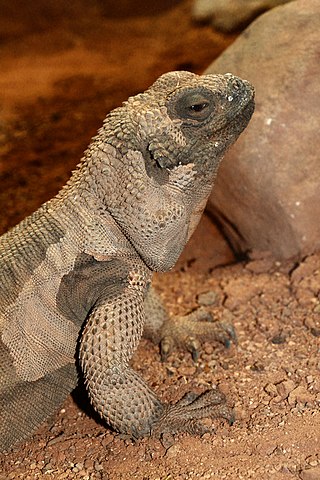
The Angel Island chuckwalla, also known as the spiny chuckwalla, is a species of chuckwalla lizard belonging to the family Iguanidae endemic to Isla Ángel de la Guarda in the Gulf of California. The species was transported to other islands by a tribe of the Seri as a potential food source.
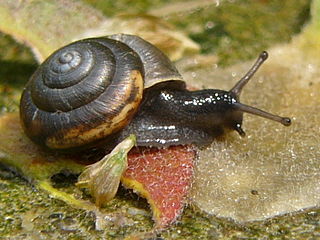
Trochulus hispidus, previously known as Trichia hispida, common name, the "hairy snail", is a species of air-breathing land snail, a terrestrial pulmonate gastropod mollusk in the family Hygromiidae, the hairy snails and their allies.
Acromyrmex hispidus is a species of leaf-cutter ant, a New World ant of the subfamily Myrmicinae of the genus Acromyrmex. It is found in the wild in southern Brazil and Bolivia.

Stephanolepis hispidus, the planehead filefish, is a species of bony fish, a ray-finned fish in the family Monacanthidae.

The shaggy frogfish, also known as the hispid frogfish, shaggy anglerfish or zebra anglerfish, is a marine ray-finned fish belonging to the family Antennariidae, the frogfishes. This fish is found in the Indo-Pacific.

Strophanthus hispidus, the hispid strophanthus, is a liana or shrub that can grow up to 5 metres (16 ft) tall. Its flowers feature a yellow corolla and yellow corona lobes spotted with red, purple or brown. The seeds, like those of several other Strophanthus species, contain potent cardiac glycosides absorbable through wounds - hence its use in African arrow poisons and later in modern medicine as a digitalis-like heart stimulant. Strophanthus hispidus is native from west tropical Africa east to Tanzania and south to Angola. It is naturalized in China.

Opopanax is a genus of plants in the family Apiaceae.

Macrorhoptus is a genus of weevils in the beetle family Curculionidae. There are about nine described species in Macrorhoptus, found in the Americas.
Macrorhoptus estriatus is a species of weevil in the beetle family Curculionidae, found in the central United States.
















